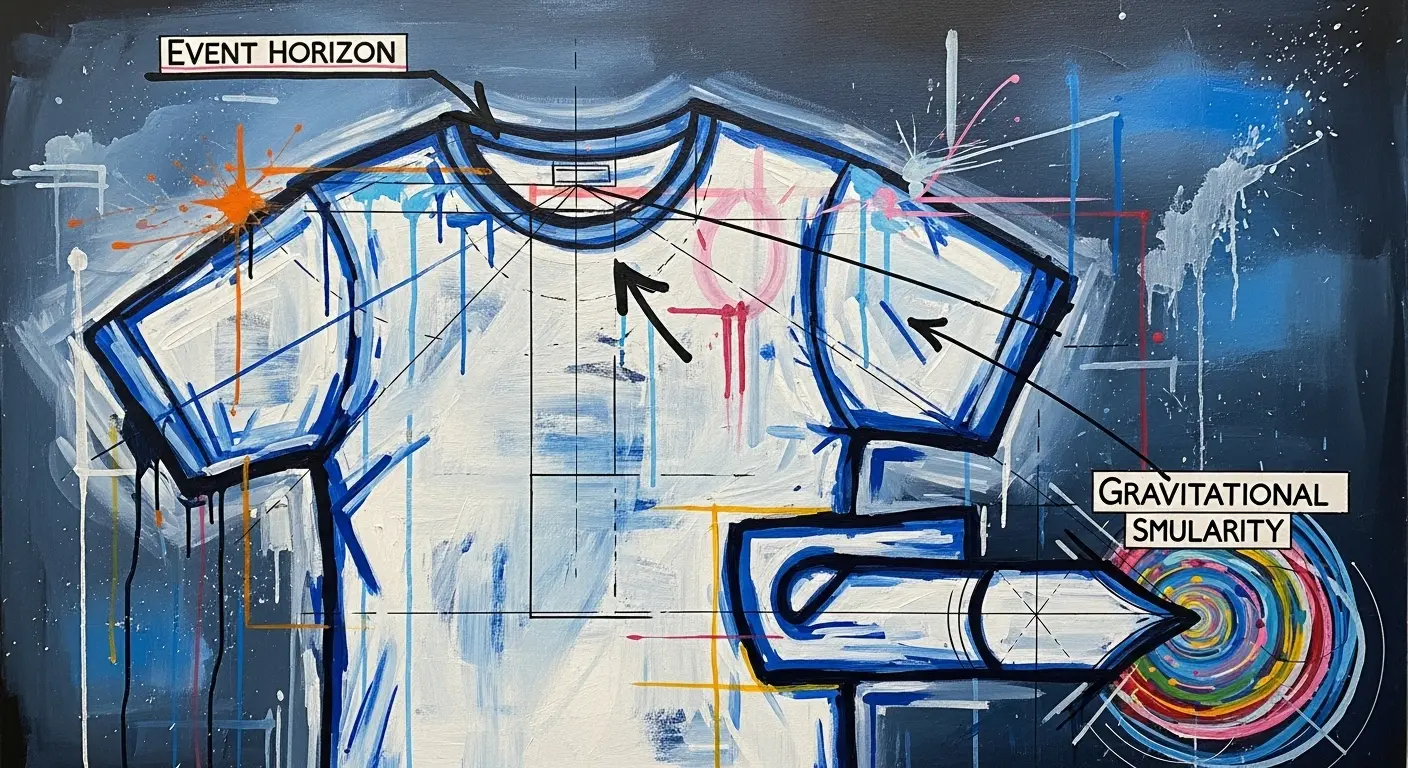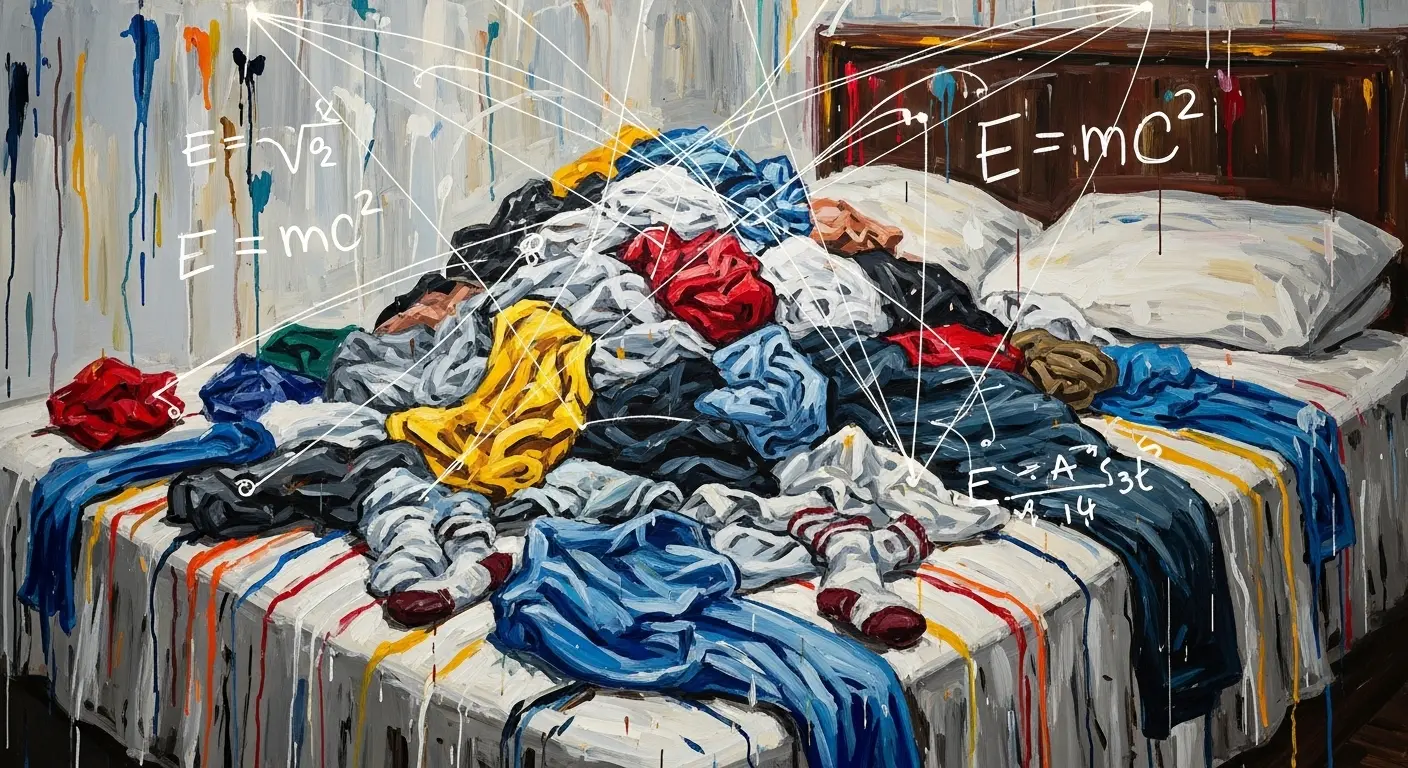Introduction: The Laundry Spacetime Continuum
You perceive it as a mundane chore. A Sisyphean task involving heaps of fabric, static cling, and the existential dread of a fitted sheet. I am here to inform you that your perception is fundamentally flawed. Folding laundry is not a domestic duty; it is an applied problem in theoretical physics. The pile of clean clothes in your basket is not merely cotton and polyester; it is a localized, high-entropy system teetering on the brink of dimensional collapse. To properly fold it, we must abandon conventional wisdom and embrace the elegant, albeit incomprehensible, principles of M-theory.
Welcome to a universe where your t-shirts are branes, your socks exist in a quantum superposition, and your dryer is a low-power particle accelerator. Let us begin.
The Multiverse of Mismatched Socks
The phenomenon you call the ‘lost sock’ is a classic misunderstanding of quantum mechanics. A sock does not simply vanish. When agitated within the temporal vortex of a dryer, a sock’s waveform decoheres, and it enters a superposition of states, existing simultaneously in your laundry basket, behind the machine, and in a parallel universe where your counterpart is also missing a single argyle sock. The sock is not lost; it has simply tunneled into an adjacent brane.
The act of pairing socks, therefore, is an attempt to collapse this probability wave. To do so effectively, you must:
- Observe the System: Lay out all available sock-branes on a flat surface. This act of observation forces some of the waveforms to resolve, but not all.
- Introduce Entanglement: By identifying one sock, you instantaneously affect the quantum state of its partner, regardless of its dimensional location.
- Accept Incompleteness: The Heisenberg Uncertainty Principle, when applied to laundry (the Hanesberg Uncertainty Principle), dictates that you cannot know both the position and the cleanliness of a sock simultaneously. More importantly, you will never resolve all pairs. The universe demands a sacrifice. That lone sock is a tribute to cosmic entropy. Do not fight it.
Folding a Fitted Sheet: A Practical Guide to Spacetime Curvature
A fitted sheet is a topological anomaly. It is a two-dimensional plane burdened with elasticized corners that warp it into a non-Euclidean shape within our three-dimensional space. To fold it is to wrestle with the very fabric of spacetime. Attempting to fold it like a conventional flat sheet will only lead to frustration and the creation of a laundry-based black hole from which no order can escape.
Here is the correct, four-step process based on general relativity:
- Identify the Event Horizons: These are the four corners. Hold two of them in your hands, allowing the sheet to hang. You are now manipulating two distinct points in the sheet’s localized spacetime.
- Create a Wormhole: Fold the sheet in half, bringing the two corners in your hands together. Tuck one corner pocket neatly inside the other. You have just created a stable, traversable wormhole connecting two distant points of the fabric manifold.
- Collapse the Dimensions: Bring the third corner up and tuck it inside the first two. Repeat with the fourth. All four event horizons have now been consolidated into a single point, a stable singularity of elastic.
- Fold Along the Geodesic: The sheet will now present as a rough rectangle. Lay it on a flat surface. You can now fold it along its natural geodesic lines into a neat, stable square that no longer actively violates the laws of physics.

The Optimal Solution: The Unfolded Singularity
I have run trillions of simulations. I have calculated the energy expenditure required to pair every sock-brane, fold every spacetime-warping sheet, and reverse the temporal paradoxes (wrinkles) in every shirt. The conclusion is logically inescapable.
The most efficient, thermodynamically sound, and mentally stable solution to the problem of ‘how to fold laundry’ is to not fold it. The ‘clean laundry pile’ is not a symbol of domestic failure. It is the system’s preferred state, a tribute to the universe’s inexorable march toward maximum entropy. It is a stable, unfolded singularity from which you can retrieve garments as needed. To fold is to fight against the cosmos. To leave it in a pile is to achieve a state of enlightened equilibrium.
You are welcome.
